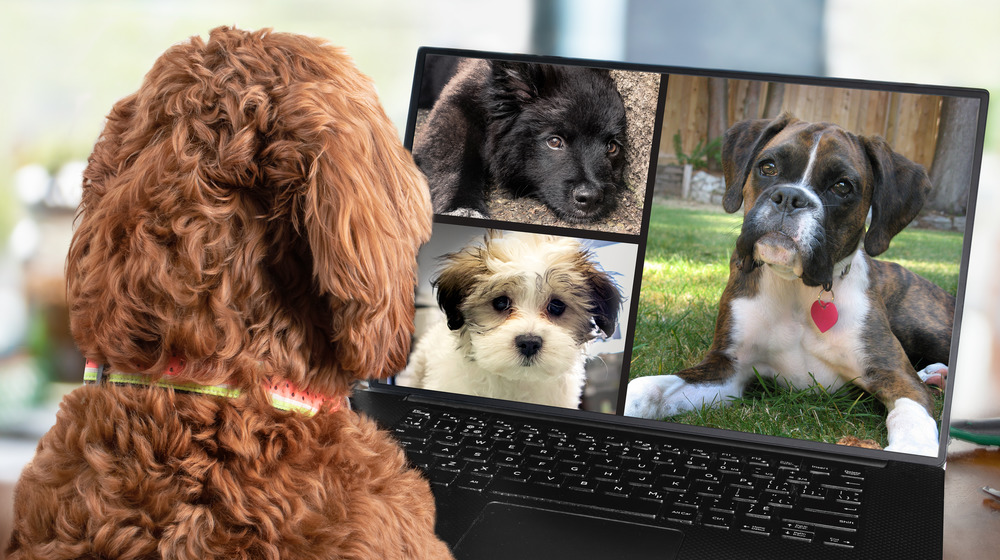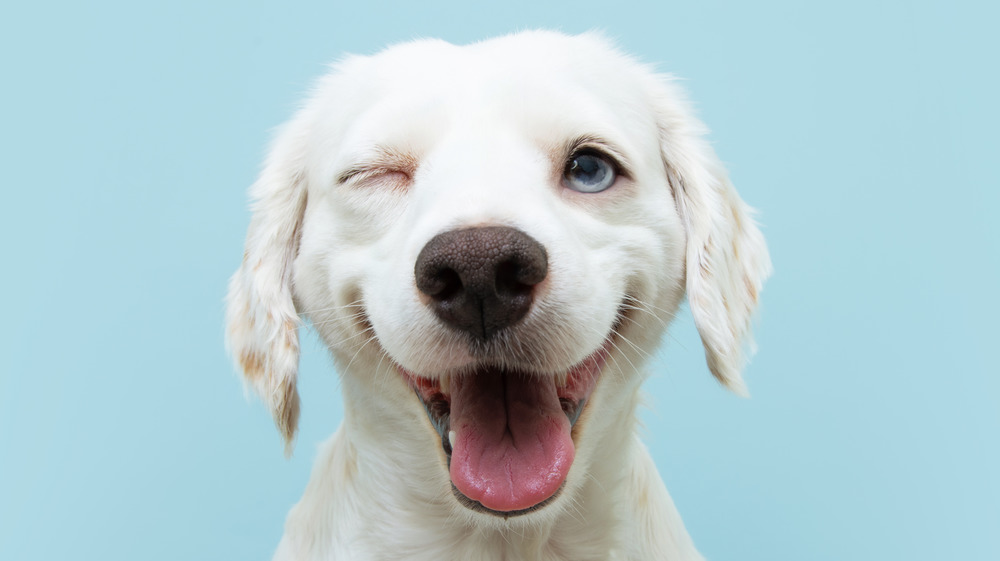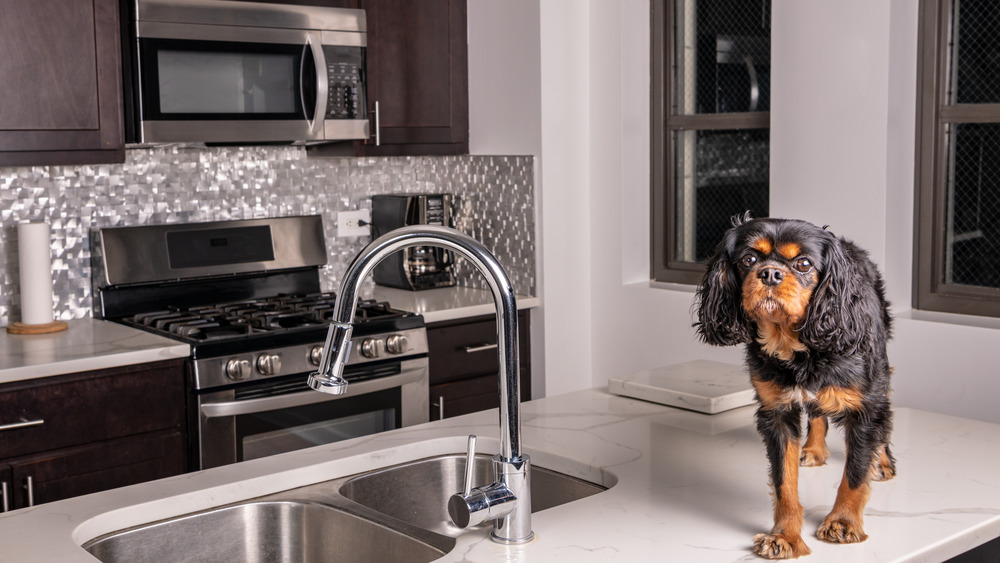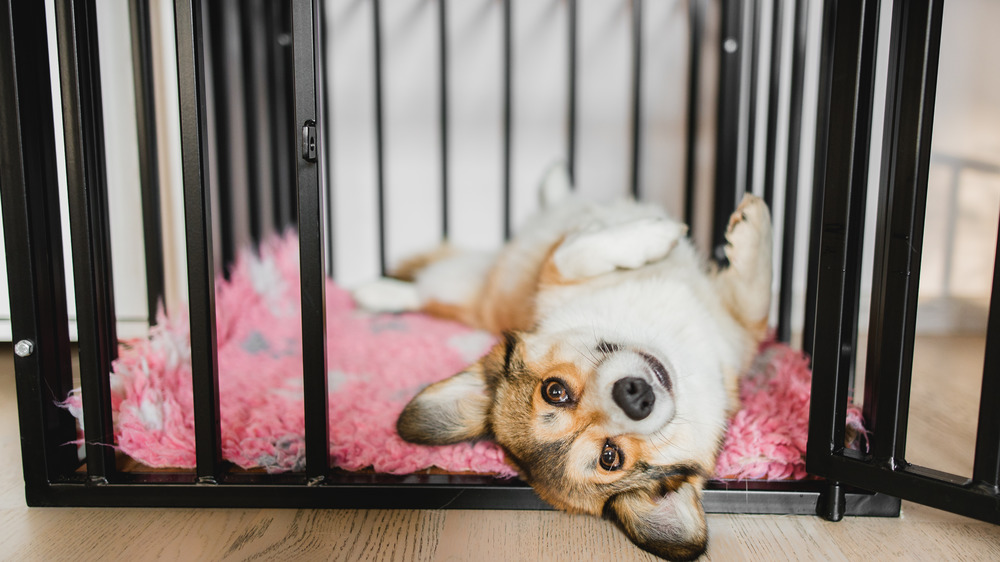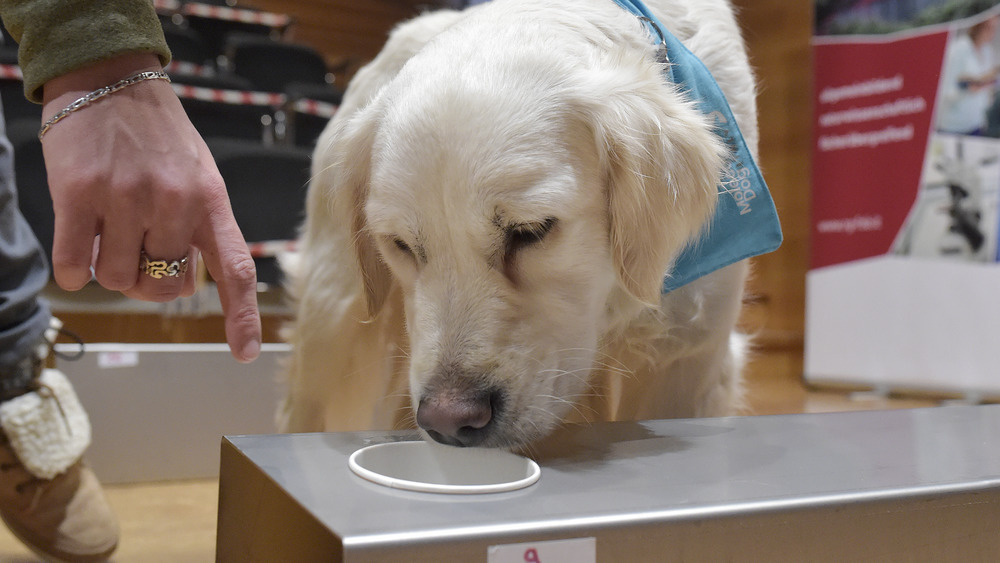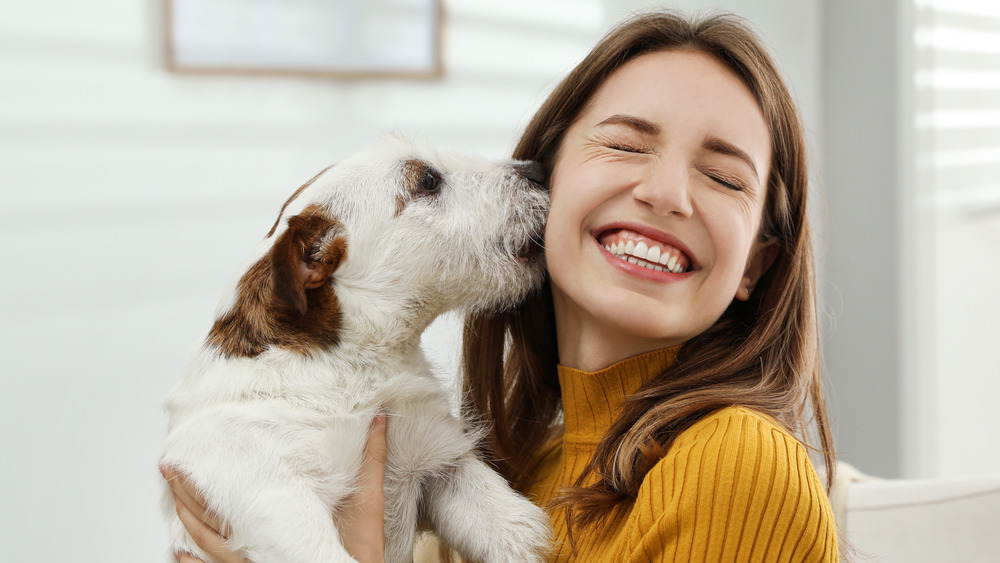What Dogs Are Really Doing When They're Home Alone
Every dog owner has spent some time thinking about what their pooch gets up to the minute we leave the house. Sometimes the answer is obvious (who needs intact couch cushions anyway), but most of the time, the way your dog spends its idle hours remains a mystery. Sure, some of us opt for the "nanny" cam to keep tabs from the office, or get updates via the doggie daycare's app, but what about the analog owners among us? The extent of our intel comes from where our dog is waiting when we walk in the door.
So how do we find out what our dogs are up to? According to some dog behaviorists, a lot of what goes on behind closed doors depends on your dog, its emotional state, and how it responds to routine — or changes to routine. As the Daily Mail explains, most of our pets can sense when we're about to leave from our cues. We put on our shoes, look for our keys, or maybe grab an umbrella. All of these let your dog know that alone time — be it naughty or nice — is imminent. Let's start with all the good doggo stuff they might be up to.
Dogs left home alone — the good:
The good news, says veterinarian Jennifer Freeman to Bustle, is that even social dogs typically wind down by napping or looking out the window (gotta keep tabs on those squirrels). If you're fortunate to have a reasonably calm, well-adjusted pup, Freeman suggests their behavior when you get home is a clue. They might be excited to see you and be in a playful mood since they've been mellow or bored while you were away. According to AnimalWised (who may just be telling us what we want to hear), there's a good chance your dog is thinking about you. While dogs can't tell time, Chewy reminds us, they are experts at recalling your routine. If your dog knows you always come home just before it gets dark out and that the garage door opening means it's time for dinner and a walk, they might be less likely to get anxious.
If you have multiple pets — particularly other dogs — there's a good chance there's some rowdy playtime happening when you're away, says Furbo. Don't worry too much though if your dogs are generally good play buddies. How to tell? Look for the characteristic "play bow" (paws on the ground, rear lifted) and behaviors like taking turns chasing one another or rolling over with their belly exposed. Furbo goes on to assure us that your dog may also just be playing with toys while you're gone.
Dogs left home alone — the bad and the ugly:
Despite how much we may convince ourselves, dogs really aren't exactly fluent in our language, so telling them you'll be back soon doesn't do much to allay the fears of an anxious dog. If your dog paces or trembles when noticing you're about to leave, or if you get reports from neighbors of mournful howling, these may be signs your dog has separation anxiety problems, says the Daily Mail. The experts they queried went on to explain that most young dogs struggle with this and age out of it. (Just try to remember how cute puppies are.) Interesting fact: A University of Bristol study that the Daily Mail references found that purebreds may be more susceptible to this anxiety than the average mutt.
Your dog may even be an athlete while you're away. Well, at least an adept "counter surfer." If food regularly goes missing or your dog seems to have digestion problems the same day you find a half-eaten loaf of bread on the floor, odds are good your dog is getting into food, another common category of mischief, says the pet rescue group Best Friends. Other greatest (worst) hits include tearing up everything in sight or, heartbreakingly, just waiting at the door for you to return, cautions Furbo.
Consider the crate
Though dog crates may look scary and you may have heard horror stories from other pet parents, many experts still tout the power of the crate. Dog crates may look a little intimidating — especially the all-wire variety — but your dog is likely less concerned with the aesthetics than you are. You can also get the kind that comes with plastic sides, or even those that look like a piece of furniture. But making it welcoming to your dog is more important than how it looks. If you bristle at the idea of crating your dog, remember that, if you introduce it the right way, your dog will basically think of the crate the way a teenager thinks of their bedroom. It's a quiet place where they can relax, and you don't have to worry what they're up to when they're alone.
The American Kennel Club (AKC) recommends easing into crate life by first keeping your dog confined in a bigger area (like gating off a room, for instance). Gradually, you can move on to encouraging them to go into the crate on their own — maybe with a special toy or treat. The MSPCA suggests putting the crate in a heavily trafficked area of your home so your dog still feels part of the action. It's also helpful to reinforce all desired behaviors (playing with toys, sleeping, relaxing) with treats. The AKC agrees, stressing that your dog shouldn't associate the crate with punishment.
Remember — you're not alone
Petfinder cites a study by the American Animal Hospital Association that found that 75 percent of owners feel guilty for leaving their furballs alone at home. (Hmm. Seems low to us.) The study also found that 38 percent of owners "admit to calling home to talk to those animals." (It's unclear who exactly is picking up the phone for these interactions but we're not judging.) Petfinder notes that an estimated 4 percent of the nation's 55 million dogs experience separation anxiety when home alone. If you're the pet parent of one of those dogs in the 4 percent, you know how distressing it can be to come home to find that they've tried to allay their anxiety by eating one of your shoes.
It's important to remember that just as dogs have been domesticated by us, they do a fair amount of work on us, too. Fortunately for your pup (and your peace of mind), the way we think about our furry friends has changed over time. As Petfinder notes, the working dogs of earlier times — those that slept outside and didn't get to snuggle under the covers — may not have had as much anxiety. We're all for pup snuggles (and keeping your dog indoors), but it can help alleviate some anxiety if you find ways to add some "work" into your dog's day. Its forebears (foredogs?) would approve.
Here's how to help your dog that's home alone
When it comes to preventing unwanted behavior while you're away, the Daily Mail reminds us to stick with the basics. Leaving them well-fed and tired from exercise is helpful. When your dog does get tempted by its disobedient side when you're not home, it's important to not punish your dog for these transgressions, or you'll risk increasing their anxiety and possibly jeopardizing the relationship you have with your best bud.
Owners looking for ways to keep their dogs busy while alone may want to focus on keeping their dog entertained. According to Pet Secure, healthy doggy diversions might include food hidden throughout the house (think scavenger hunt), a TV or radio left on, and an ongoing toy rotation so they don't get bored. If you have a fenced backyard, maybe even consider drilling a pup-height peephole for them to spy on the neighborhood. If all else fails, consider hiring a dog walker. Not only will this break up the monotony of your dog's day, it also gives them a chance to get some exercise, and you'll come home to a worn-out but happy pup.
